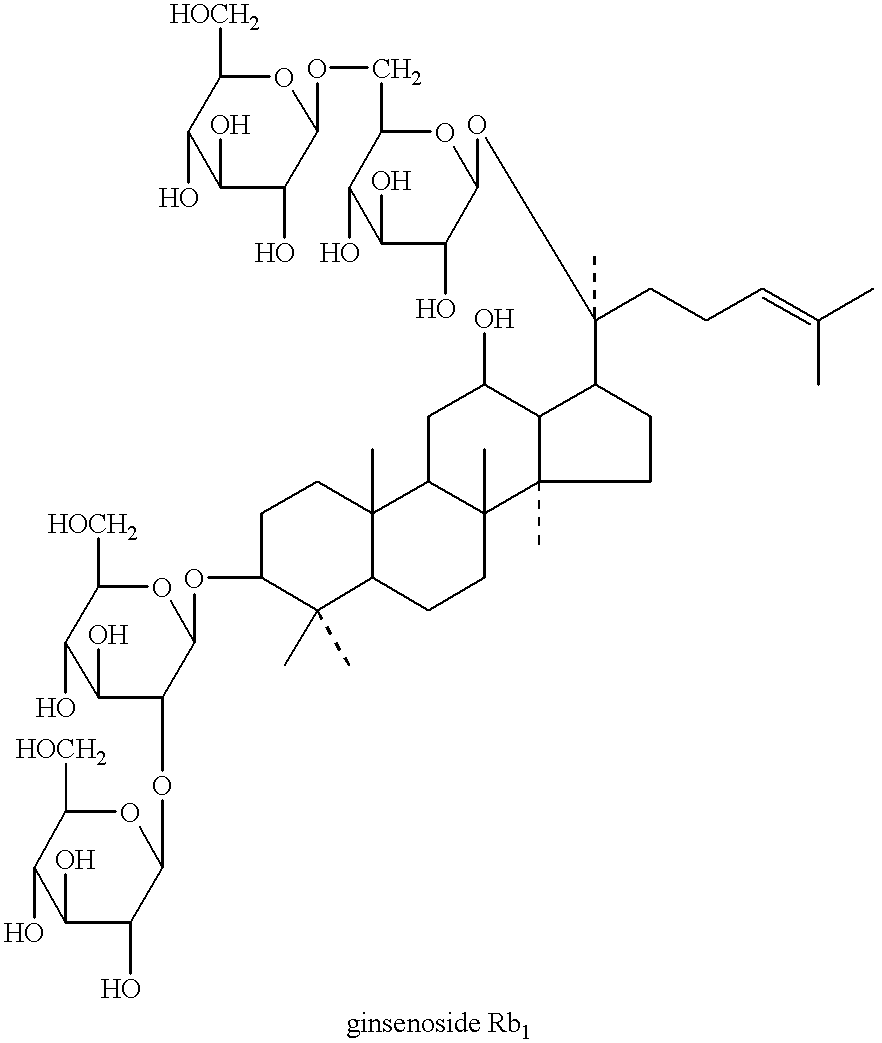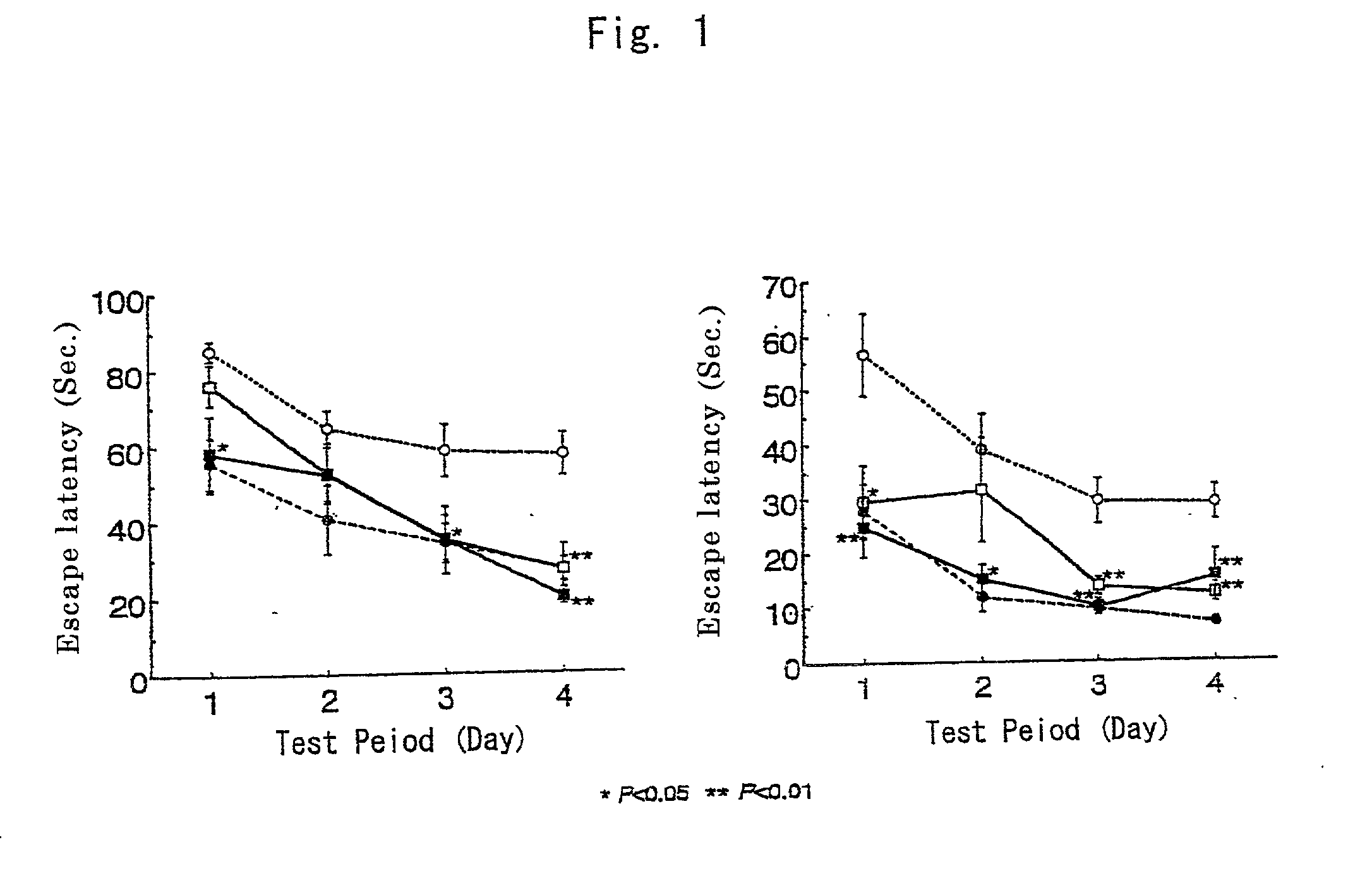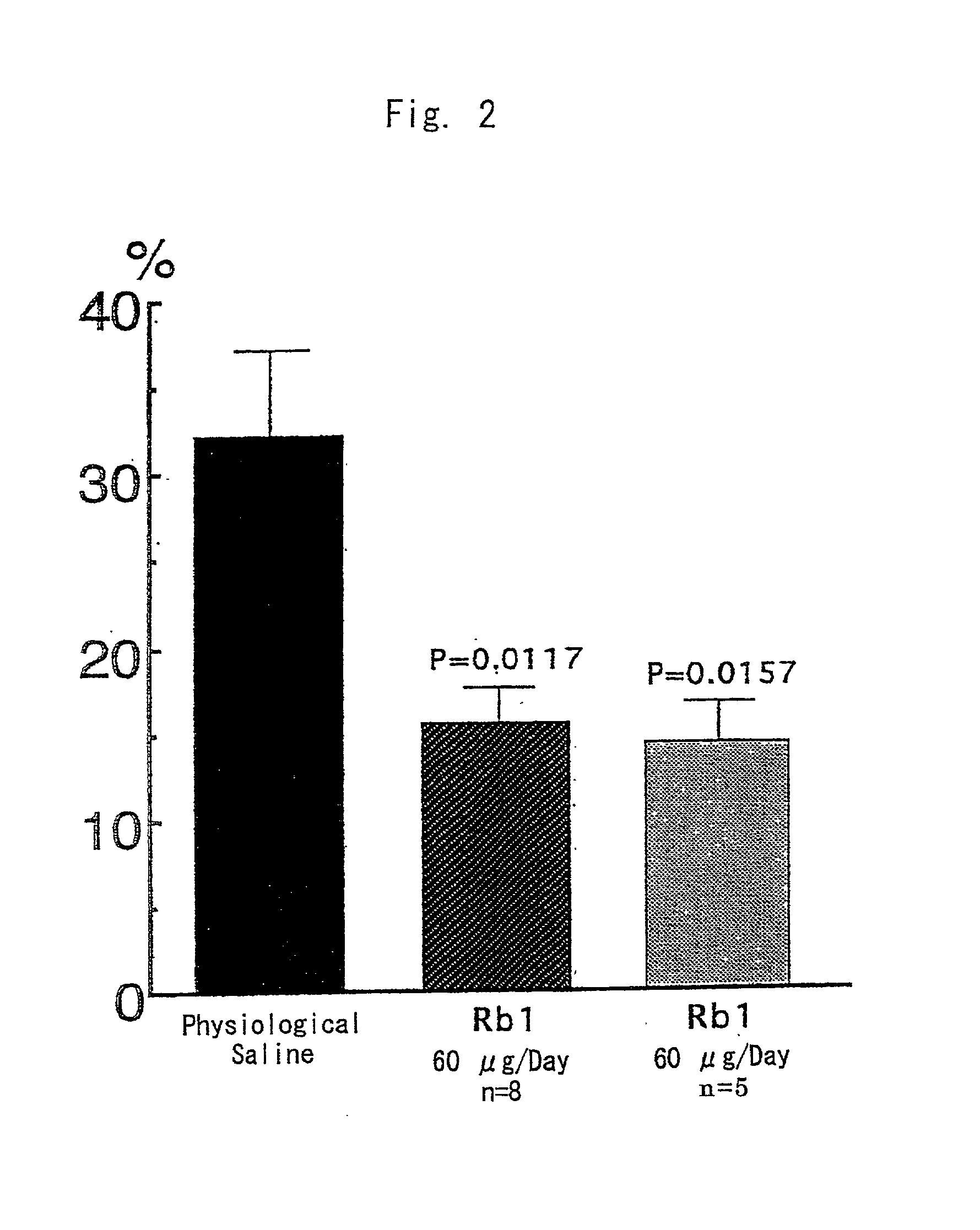Brain cell or nerve cell-protective agents comprising ginsenoside Rb1
a technology of ginsenoside and nerve cells, which is applied in the direction of antibody medical ingredients, carrier-bound antigen/hapten ingredients, immunological disorders, etc., can solve the problems of threatening the survival of patients, no effective countermeasures can be taken, and permanent disorder of higher functional activities, etc., to achieve suppressive effect on cerebral infarction, convenient application to humans, and convenient use
- Summary
- Abstract
- Description
- Claims
- Application Information
AI Technical Summary
Benefits of technology
Problems solved by technology
Method used
Image
Examples
example 1
[0092] Experiment on Intravenous Infusion of Ginsenoside Rb.sub.1
[0093] Male SH-SP rats at the age of 12-13 weeks, weighing 250-300 g, were used. The animals were bred in a room furnished with 12 hours light and dark cycles and water and feeds were supplied ad libitum. Blood pressure of the animals was 203.+-.6.9 mmHg. The following experiments were conducted in accordance with the Guide for Animal Experimentation at Ehime University School of Medicine. The cortical branch of the left middle cerebral artery (MCA) of SH-SP rats, were coagulated and cut, while their rectal temperature was maintained at 37.+-.0.2.degree. C. under inhalation anesthesia.
[0094] Immediately after MCA permanent occlusion, 60 .mu.l of physiological saline containing ginsenoside Rb.sub.1 at a concentration of 1 .mu.g / .mu.l or 0.1 .mu.g / .mu.l was injected once into the left femoral vein. Then a catheter connected to an Alza osmotic minipump implanted subcutaneously in the back of each animal was inserted into ...
example 2
Experiments on a Preventive Effect of Ginsenoside Rb.sub.1 on Peroxidation of Neuronal Membrane Lipids
[0102] Cerebrocortical neurons from rats at embryonic age 17, were maintained in a serum-free culture medium for 3 days, and thereafter the medium was replaced with a fresh culture medium containing ginsenoside Rb.sub.1 at the concentrations of 0.1 fg / ml, 1 fg / ml, 10 fg / ml, 100 fg / ml and 1000 fg / ml or not containing ginsenoside Rb.sub.1 (0 fg / ml) and the neurons were incubated for further 48 hours. Then the medium was changed to a fresh medium containing ferrous sulfate and ascorbic acid but no ginsenoside Rb.sub.1, and the neuronal culture was maintained for 2 hours to generate hydroxyl radicals for giving oxidative injury to neuronal membrane. The generated neuronal membrane lipid peroxide was photometrically determined by measuring the fixed amount of thiobarbituric acid (TBA) after solubilizing the cells with sodium dodecyl sulfate.
[0103] Results are shown in FIG. 5. From the ex...
example 3
Experiments for Judging a Suppressive Action of Ginsenoside Rb.sub.1 on Nerve Cell Death (Apoptosis)
[0104] After maintaining cerebrocortical nerve cells (neurons) from rats at embryonic age 17 in a serum-free culture medium for 4 or 5 days, the medium was replaced with a fresh medium containing ginsenoside Rb.sub.1 at the concentrations of 1 fg / ml, 100 fg / ml and 100 pg / ml or no ginsenoside Rb.sub.1 (0 fg / ml), and the neurons were incubated for 24 hours. Thereafter a nitric oxide (NO) donor, sodium nitroprusside (SNP) at a concentration of 100 .mu.M, was added to the medium for 10 minutes. Then the nerve cells (neurons) were maintained in a medium containing ginsenoside Rb.sub.1 for 16 hours. Survival rate of the nerve cells was measured by using a redox indicator, alamar blue.
[0105] Results are shown in FIG. 6. In the left drawing of FIG. 6, results without SNP treatment are shown; ginsenoside Rb.sub.1 did not affect the (metabolic) activity of neurons without SNP treatment. In the ...
PUM
| Property | Measurement | Unit |
|---|---|---|
| Concentration | aaaaa | aaaaa |
| Concentration | aaaaa | aaaaa |
| Composition | aaaaa | aaaaa |
Abstract
Description
Claims
Application Information
 Login to View More
Login to View More - R&D
- Intellectual Property
- Life Sciences
- Materials
- Tech Scout
- Unparalleled Data Quality
- Higher Quality Content
- 60% Fewer Hallucinations
Browse by: Latest US Patents, China's latest patents, Technical Efficacy Thesaurus, Application Domain, Technology Topic, Popular Technical Reports.
© 2025 PatSnap. All rights reserved.Legal|Privacy policy|Modern Slavery Act Transparency Statement|Sitemap|About US| Contact US: help@patsnap.com



